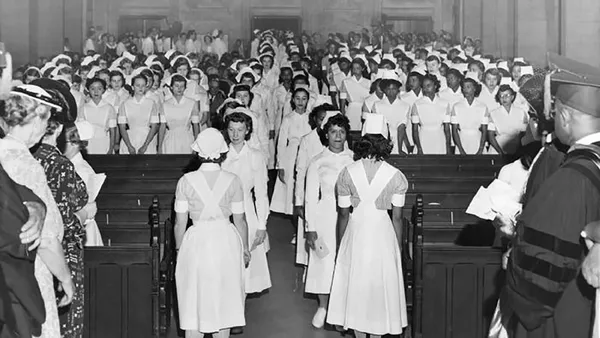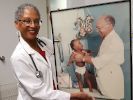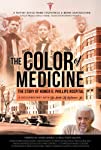Eye For Film >> Movies >> The Color Of Medicine (2018) Film Review
The Color Of Medicine
Reviewed by: Jennie Kermode

In the US in 1937, when segregated medical treatment meant that people of colour received a much lower standard of medical care, the opening of Homer G Phillips Hospital in St Louis, Missouri, was a huge step. It would go on to train more black medical professionals than any other institution of its kind, and to do so in a way that changed popular expectations of what they were capable of. It transformed the way that the city's African American inhabitants lived and it set a new standard nationwide. In this film, Joyce Fitzpatrick and Brian Shackelford set out to tell its story.
It's a story that begins some years earlier, explaining the situation in which this particular black community lived and providing some context for viewers unfamiliar with how the Jim Crow era worked. This is done economically whilst assorted pieces of archive film and still images set the tone, establishing this as a story with a strong local focus alongside its wider import. We're also introduced to Homer G Phillips himself, with assorted speakers reflecting on his importance as a lawyer, civil rights campaigner and community leader who became - in part due to tragedy - the natural choice when the new hospital came to be named.

There's a wealth of great material here, including promotional films and extensive footage from inside the hospital itself. One of the first things modern viewers are likely to notice is that all the nurses are female and almost all the doctors male, but there are a handful of exceptions, and the documentary includes a special focus on the pioneering work of paediatrician Helen Nash, who had to fight fiercely for the opportunity to train in medicine at all but whose work with premature babies would go on to change practice right across the country, including in hospitals catering for white people. Other female doctors speak about what her example meant to them and how it helped them to get taken seriously.
Nash wasn't the only one of the hospital's alumni to make an impression on white peers. Fitzpatrick and Shackelford also reference the success of ophthalmologist Howard Venable and others whose work changed perceptions of black doctors and, thereby, of black people as a whole. One of the film's strengths, however, is that it doesn't dwell too much on comparisons with the white world, instead concentrating on how the hospital interacted with the people it served. Some of the interviewees talk about how being treated there as children inspired them to pursue medical careers, and many reflect on how the community rallied round when it was threatened with closure.
Underlying this story is one salient point: most of the people who used the hospital were living on low incomes, yet they were still provided with a standard of care which - allowing for the different state of medical knowledge at the time - was clearly higher than that available to many Americans today. The loyalty that local people expressed towards their hospital is similar to that which people in the UK express towards the NHS. The contrast between what we see of black life in St Louis before and after it was running makes a strong argument for the value of state-subsidised healthcare in the context of a country well known for its resistance to considering the subject.
Full of local flavour and buoyed up by the passion of its participants, The Color Of Medicine is a fascinating tribute to an institution that played a vital role in St Louis history and deserves to be more widely known.
Reviewed on: 11 May 2020

















